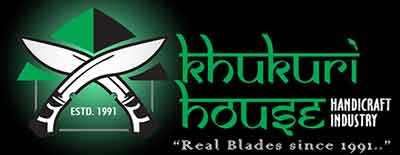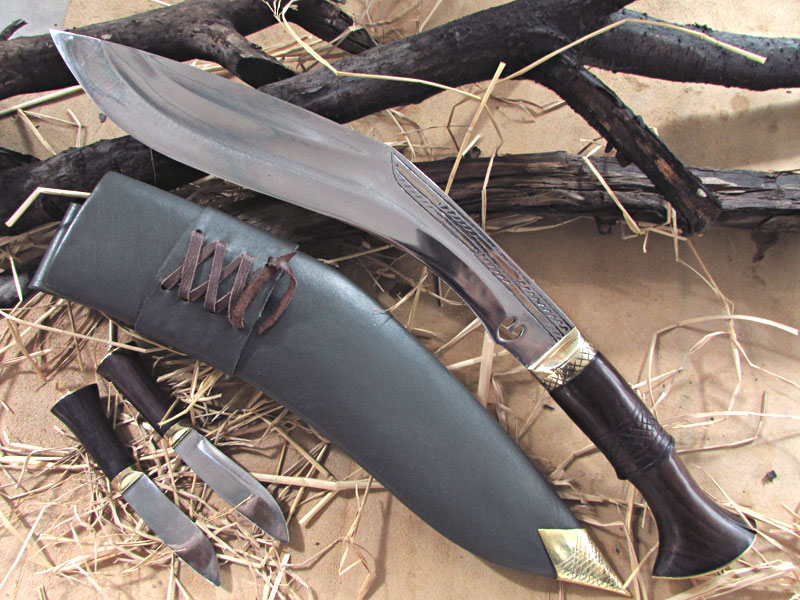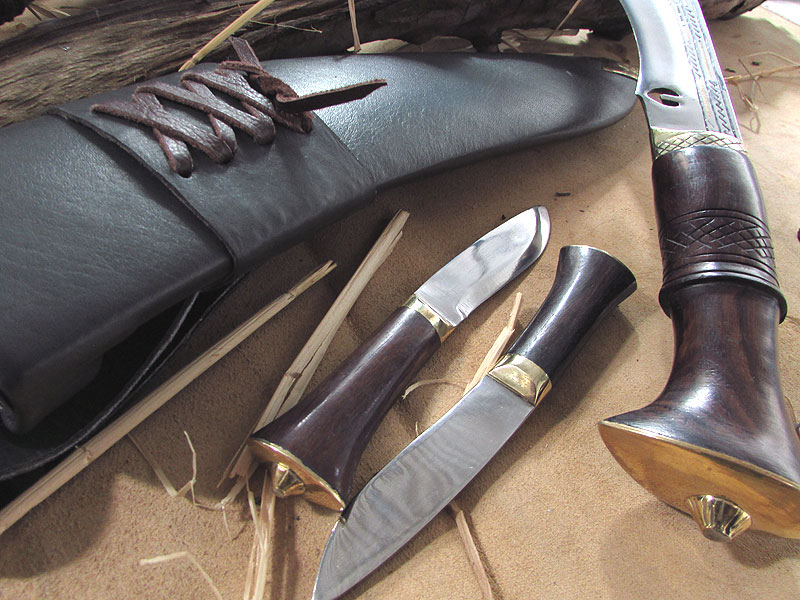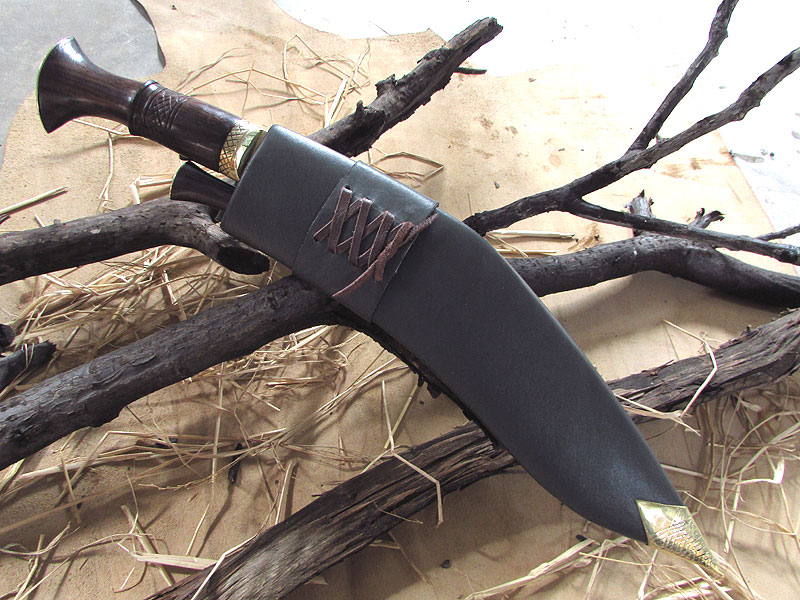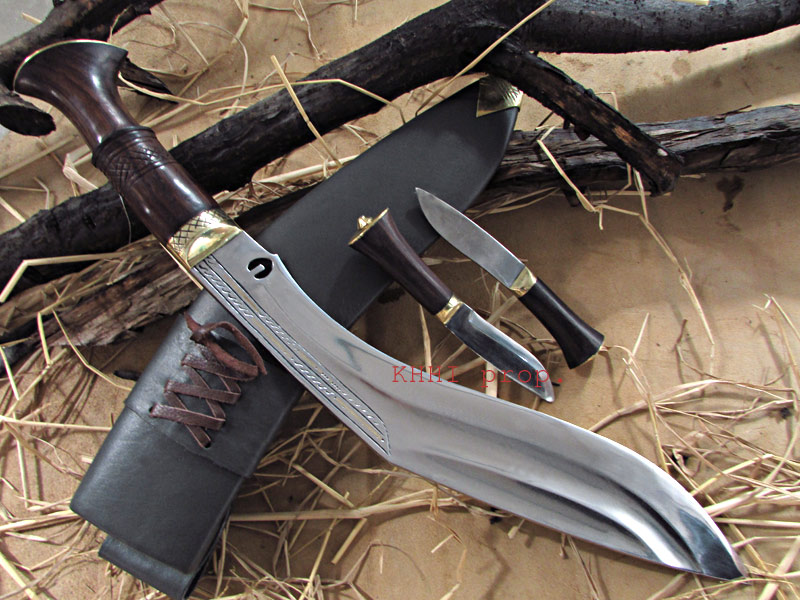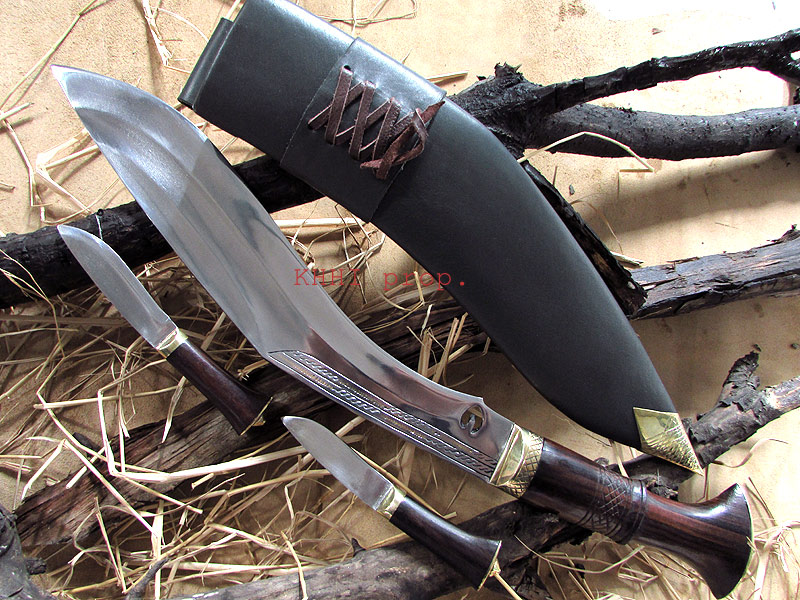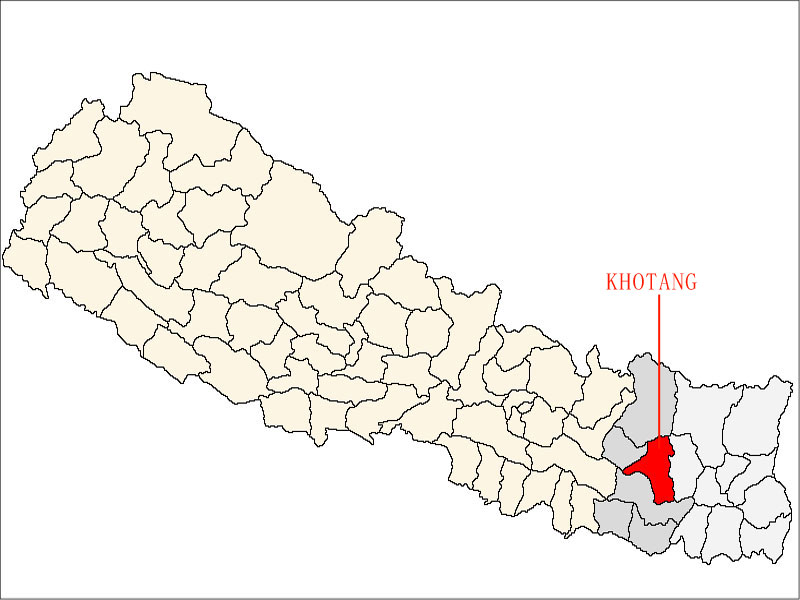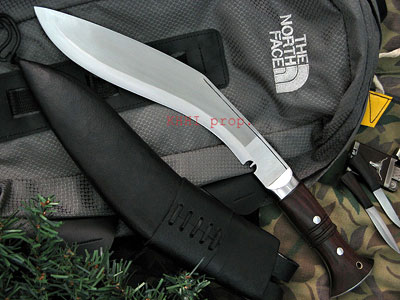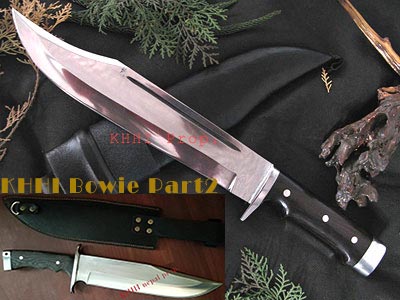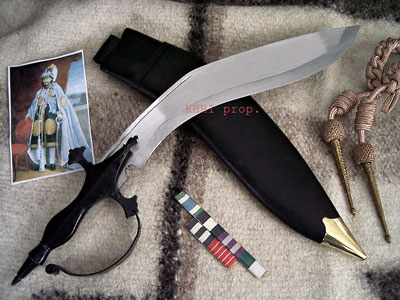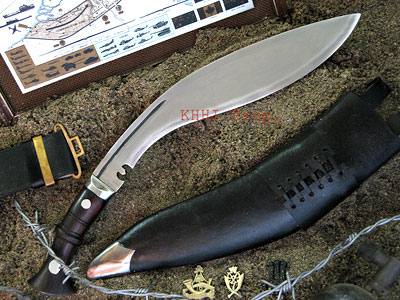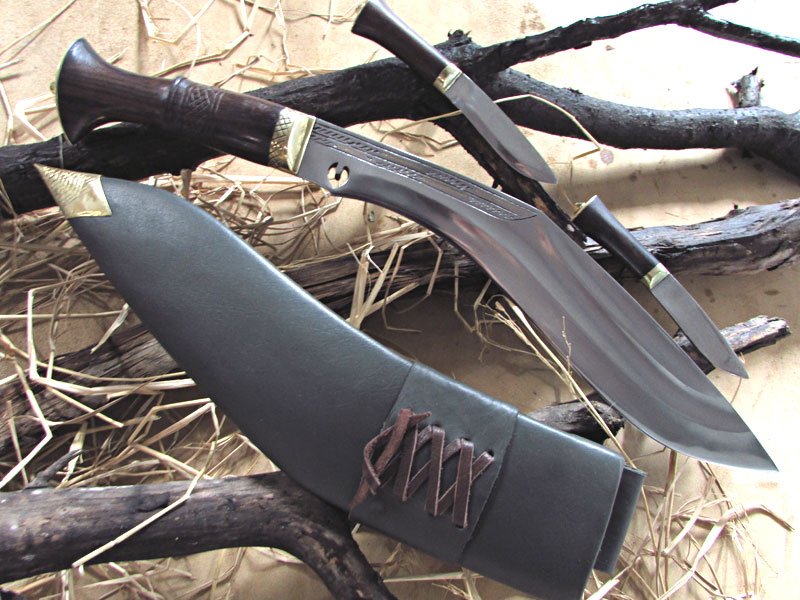
The Khotang Village Khukuri (BaasCate)
The Khotang Village khukuri is tribute to a classic khukuri that has been a part of villagers’ and farmers’ lives now and then..
Delivery: Estimated between May 19, 2024 and May 29, 2024
Item Location: Nepal
Default Specification
- Blade Size (in): 13
- Handle Size (in): 5.5
- Handle Material: Rosewood
- Actual Weight (gm): 700
- Overall weight (gm): 1050
- Shipping weight (gm): 1500
- Blade finishing: Polished
- Blade sharpness: Standard (very sharp)
- Blade material: 5160
- Place of Origin: Khotang, far eastern Nepal
- Accompanying knives/B-up: Karda Chakmak
- Blade thickness (mm): 7
- Handle finishing: polished
- Sheath: Green leather
- Released date of KHHI Nepal: 2018-09-12
- Tang type: Stick
- Fixture: Brass
- Edge grinding: Convex
- Edge Hardness: 55-57 hrc
- Blade (panel) Grinding: Chirra
BaasCate : a typical village khukuri from Khotang (eastern Nepal)...
A famous and common kukri knife from a remote Eastern village of Nepal called Khotang. It is said that this particular khukuri (shape and size) was made by local many decades ago to help them in their daily domestic chore especially for cutting bamboos/logs and clearing jungle and overgrowth. The Khotang Village khukuri inspires its shape and size from a typical Khotange khukuri called the “BaasCate” however with the enhancement of chirra (fuller), handle butt cap, polished finishing and proper usable small knives (Karda and Chakmak). The Khotang Village khukuri is a tribute to this classic khukuri that has been a part of villagers’ and farmers’ lives now and then.
features of Khotang Village Khukuri >>
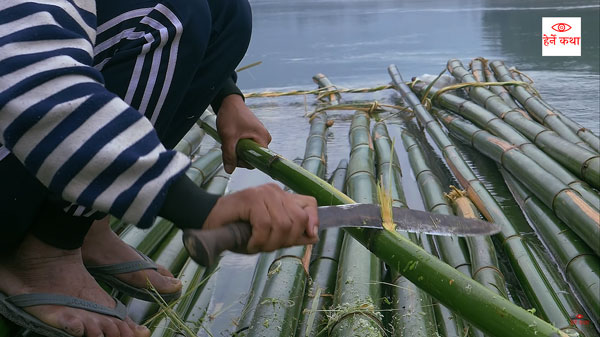
- Overall look of the “Chitlange Village” version but little fatter
- Forging of chirra/fuller (1 ½) for strength and beauty
- Gentle decoration in blade, bolster, handle and keeper for beautification
- Cow-hoof (closed) notch of the famous “Chitlange” version
- Thinner, lighter and well balanced weight (feel)
- Taller convex edge for strength, durability and deeper impact (cut)
- Stick tang rosewood handle having flared butt cap for durability and better grip
- Straight and cross rings and big ridge for beautiful look and sturdy grip
- Traditional style, shape and structure
- Green leather traditional dab (sheath) having decorated brass kothi (chape)
- Vertical single belt loop with cross leather stitch
Chirra & its benefit
Chirra or chirre, fuller or groove in English is actually the shallow lines that run along the panel of the blade. A very skilled craftsman first creates hump/s as required in the panel of the blade when forging and later grinds it out in a bench grinder. A custom made (tempered) grinding wheel is used to grind away mass of the blade along the hump and hallow channel is created. This must be done very carefully and requires years of skill and experience.
- cuts down the unnecessary weight and thus gives a nice feel and balanced weight
- The pressure/tension generated in impact (cutting) by the edge is evenly distributed in wavy form from edge to spine relaxing the edge. Hence rattling of the edge is minimized
- Chirra beautifies the look of the blade. The wavy pattern (surface) gives a artistic and unique look
Karda Chakmak >> fully functional small accompanying knives (Karda and Chakmak) are included with this khukuri. Here the maker himself makes these two knives to his best ability by putting equal amount of skill, effort and time as the mother blade. This is one of the few khukuris in which the maker (kami) himself does the knives and thus comes in very high quality. Karda = Small utility knife / Chakmak = emergency sharpener and stropping tool
About KHOTANG >>
Geographical Location
Khotang is a district in East Nepal that falls under province No 1. It is a hilly region and hence the area of Khotang is predominantly rural which makes external and internal accessibility very difficult. Khotang district is rich in nature. Terraced land, high hills, and green forest are found in abundance here. It is rich in terms of bio diversity as well as it is home to different species of flora and fauna. The most important aspect of Khotang district is the religious values it holds in the lives of people living in Nepal. Halesi Mahadev is one of the most famous religious places, temples, and religious sites in Khotang.
Khotang is also well known for their handmade items like pashmina, dhaka, wood carvings etc however they also take pride in being one of the most popular metal artists in Nepal. Many types of high quality khukuris are made in Khotang and supplied all over to Nepal.
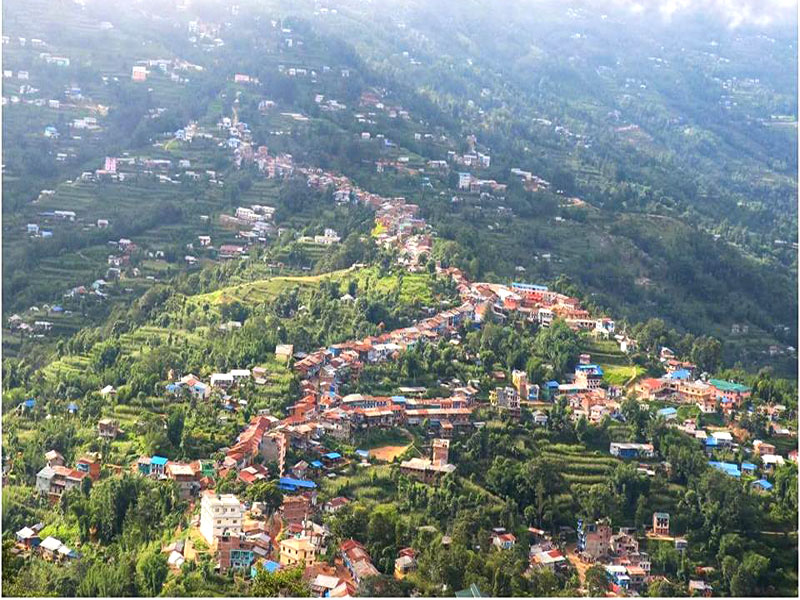
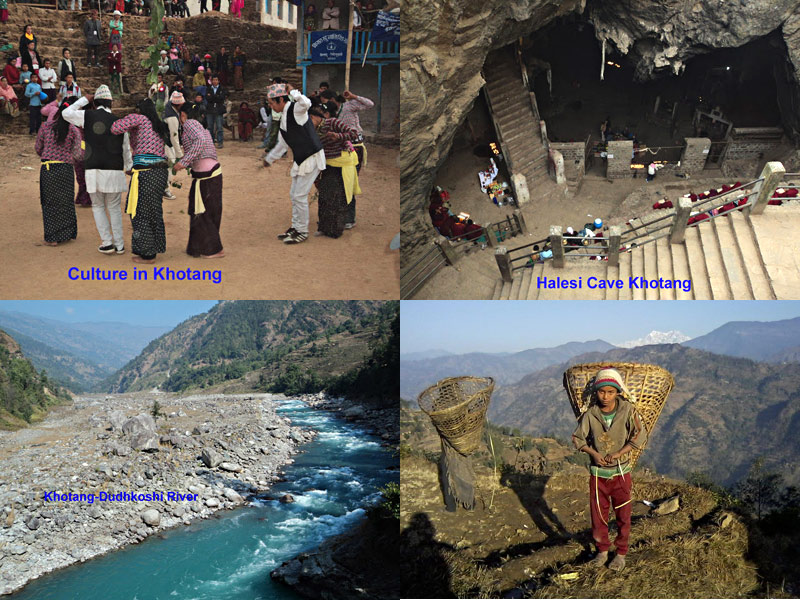
Culture/People
Cultural heritage is embedded among people in this part of district. Khotang is part of the area traditionally called Majh Kirat (middle Kirat /Khambuwan), home to indigenous ethnic Kirat Rai people or famously known as the Gurkha people. Apart from Rais, other ethnic groups and hill castes also live in Khotang like Brahmins, Tamangs, Thakuris, Dalits etc. A large number of people practice their ancient beliefs and follow indigenous religious concepts. The tribes are also synonymous with music and dance and they display a wide array of dances unique to each tribe and some of them have religious significance.
Kamis
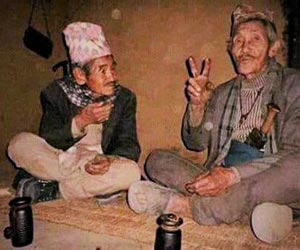
Kamis or Bishwakarma (BK) is the minority population of Khotang. They mainly live in places called Dorpa, Sholma, Saralung, Mamatim and Kharmi. Mamatim has the highest population of Kamis where most khukuris are made. It even has an iron-ore deposits and kamis used to extract/make iron from it many decades ago. Kamis still adopt the age old making process and the handed down from a father to son generations for centuries. All shapes and sizes of khukuris are made as per the demand and requirement of the job. Some khukuris made in Khotang are inspired from the “Bhojpure” khukuri that originated from their neighboring district, Bhojpur. However “BaasCate” is one of the famous designs that originated in Khotang made to cut bamboo, logs etc. BaasCate literally means Baas for Bamboo and Cate for cutting. In the recent road expansion in the above mentioned places many khukuris were found buried with the dead ones (The Rai community has a ritual of burying the dead ones along with his khukuri to honor him and safe guard him after life)
